This is one heck of a delicious cheese and not so intimidating to make….
The Halloumi is to the left, above. The feta I made on the weekend (post yet to come) is on the right.
The hard part is the step just before the brining when the cheese needs to be “cooked” at 190°F in its brine for 30-35 minutes, or until it floats. This is my question: is this the step that determines the texture of the final product? Or, is it the “kneading” process when the whey is worked out of the curds while still in the whey bath?
I have had halloumi only once before in my life, years ago at the old original Cosmos restaurant in the city in the late 70’s when I was barely 20. I didn’t know what it was, though I never forgot the addictive and unusual combination of the tangy, salty, savory, chewy cheese enigma. Cooking up a few cubes of Halloumi yesterday, that we made at Smoky Valley Goat Cheese (photographed above and below) a week ago brought me right back to that very place and time a billion years ago.
One bite, and I was sitting in that rickety wood slated back chair in the restaurant near the big double doors that would open with a gust of cold fall wind. The place was packed to the rafter, Greek music full tilt, belly dancer just finishing her first set when the mezze platter arrived. Halloumi was my first bite. The autumn colours swirled round the room to the beat of the music as my palate was christened that night through the mystique of Eastern cuisine.
How happy I was that I had just completed making this cheese again, at home, all by myself, to learn how it is done. I will compare my home made adventure to that of Smoky Valley’s first ever Halloumi which was delicious. I know one thing will be different for sure. I used one third of each milk: goat, sheep and cow. Leslie and Alex used only goat milk with their Halloumi, and it was not pasteurized. All of my milks went under low pasteurization. Of course, the raw milk cheese is more desirable, and more authentic.
Ready to go: mild lipase powder on the left, calcium chloride in the middle and rennet on the right, each diluted in 14 cup of distilled water. Milk just fit into the heavy pot and 30 to 45 minutes after resting, cut into curds. The curds were then “kneaded” for 20 minutes at 104°F. I just worked to keep the curds separated and to maintain the required size while moving them around the pot in a stirring fashion. This is not yet a Cheesepalooza Challenge cheese, but it is in Mary’s Artisan Cheese Making at Home book that the participants of Cheesepalooza are using as a guide, so this is the recipe I used as it was also the recipe used by Smoky Valley Goat Cheese. The mint in their cheese added a lovely lively little surprise and I would make it again with the dried mint.
Originally, this cheese was made with the milk of the esteemed Mouflon Breed of sheep introduced to Cyprus in the Neolythic Period, now an endangered species. Very little Halloumi is still made in the traditional manner in rural areas due to the international demand. Most is now made in factories with the addition of cow’s milk because it is cheaper. This definitely changes the flavour and texture of the original cheese made to tide the Cypriots over winter when the sheep were not providing milk.
The cheese is then strained, curds placed in a 5 inch tomme mould (which fit perfectly with 6 litres of milk (almost 6 quarts) and pressed with an 8 pound weight, ensuring that the cheese is weighted evenly so a lop sided disc will not be the result.
Because of its unique texture, it is the only cheese that doesn’t melt and is therefore usually served grilled or fried on a mezze platter. It is essential to NOT use oil when frying Halloumi as it apparently seals the cheese, not allowing the milk sugars to escape. It is the milk sugars that produce the sweet caramel flavour that Halloumi is so famous for when grilled or fried.
I was amazed at the texture and density of the cheese after 3 hours. After 6 hours it was too dark to take a good photo and I was too tired to continue, so the disc got wrapped in plastic and placed in the fridge overnight. See the white mold that has already started to grow on the new rind? The next morning, the cheese was cut into a square (“measure twice and cut once” is an old adage I should have adhered to!), and “cooked in its own brine. It never did float as I left it in one piece (an option) so took it out at 35 minutes and placed it on the mat, turning until the surface was dry on both sides. This really did not take long.
I was so proud of the cheese at this stage! It looked so professional! It was very rubbery at this point when I tasted it, thought the flavour was really a lovely blend of milky flavours. Mary says to save the cut off bits for a salad, but honestly – I wouldn’t put it in any salad, the texture was that off putting to me, so I cooked and brined the bits, too.
Tasting Notes for Halloumi Cheese
Like all artisanal cheeses, the taste changes from season to season as the diet, growth and cycle of the animals change. The taste of Halloumi will vary considerably for this reason and due to the type of milk used to make the cheese. Traditional raw milk Halloumi made from the Mouflon sheep would be number one on my list of “things to do” if I were to visit Cyprus. I know I will get to Greece, yet, so need to investigate this possibility while there.
- Appearance: creamy colour, semi-soft looking cheese without a rind
- Nose (aroma): nothing when cold
- Overall Taste: salty and tangy, but when cooked, toasted salty sweet savory deliciousness
- Sweet to Salty: extremely salty, too salty for some
- Mild (mellow) to Robust to Pungent (stinky): this is a robust, stand up and salute it: “Hello”! – kind of cheese; not stinky at all
- Mouth Feel: (gritty, sandy, chewy, greasy, gummy, etc.): a rubbery texture, but when cooked a pliable springy and squeaky texture
Participants of Cheesepalooza are not printing Mary Karlin’s recipes on our posts. If you want them, please buy the book! If you buy it from me, the proceeds I earn go to UNICEF!
Back to my initial questions: is this the step that determines the texture of the final product? Or, is it the “kneading” process when the whey is worked out of the curds while still in the whey bath? Any ideas? And my third question: how do you create Halloumi with a pliable or soft interior when cooked? Mine hasn’t cured enough to test yet, but Smoky Valley’s is very rubbery even when cooked. Delicious, but the texture is not pliable when melted. Any ideas?
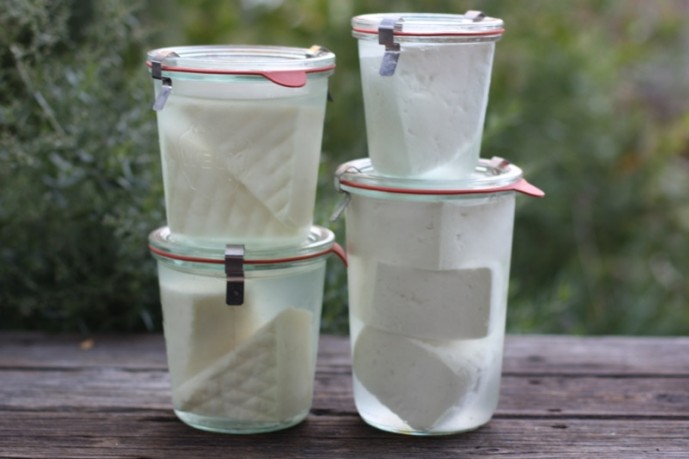
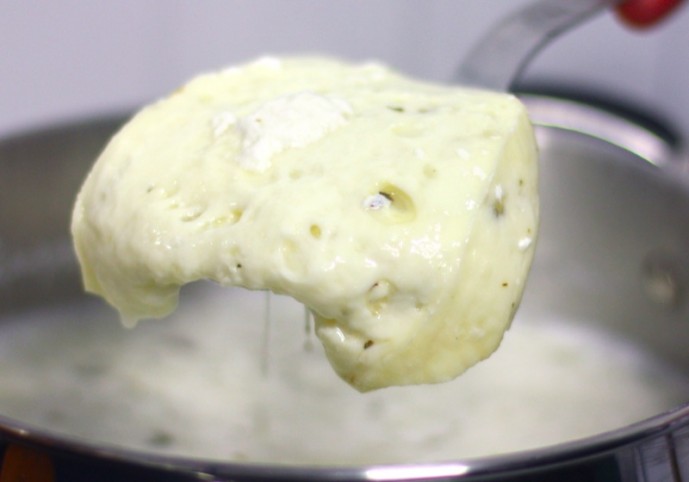
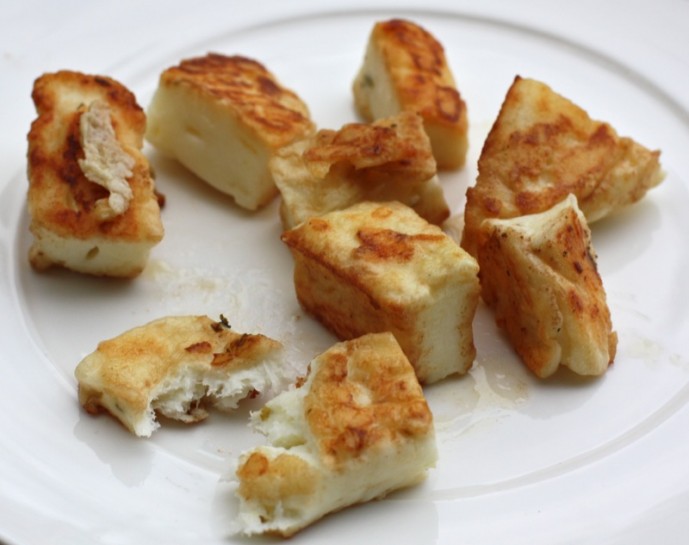
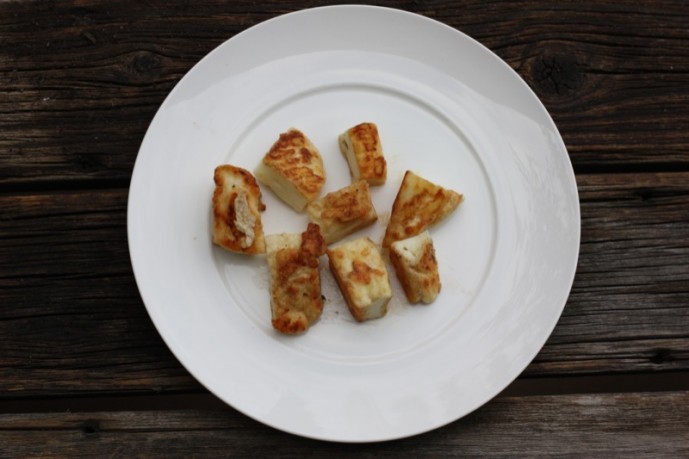
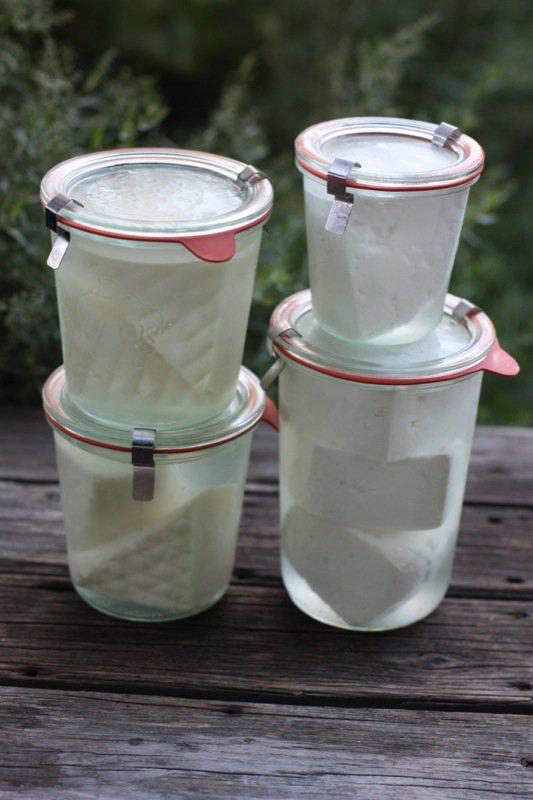
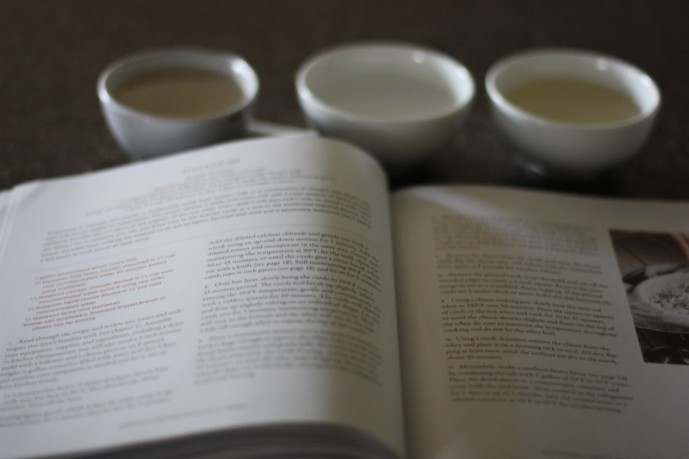
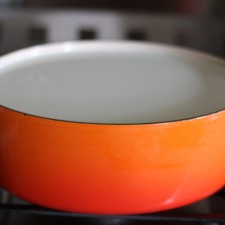
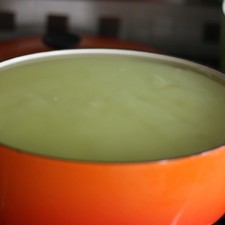
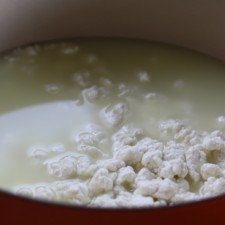
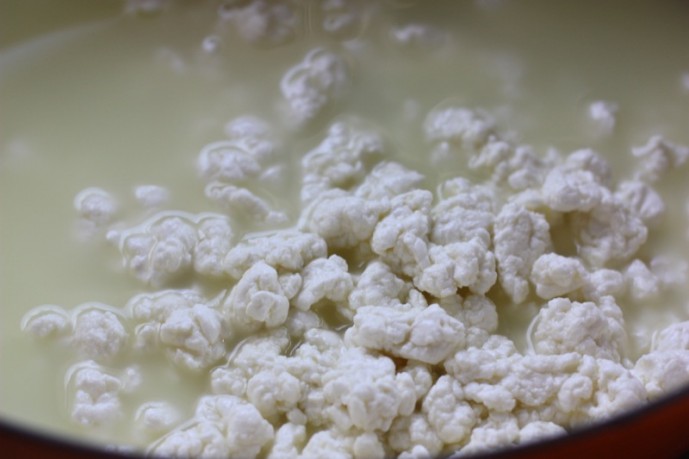
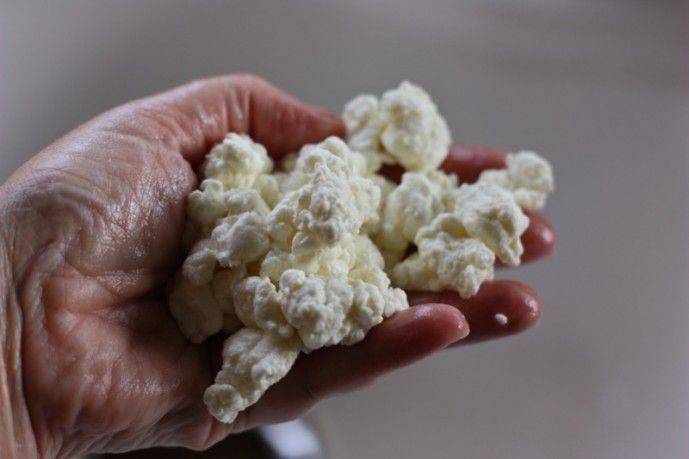
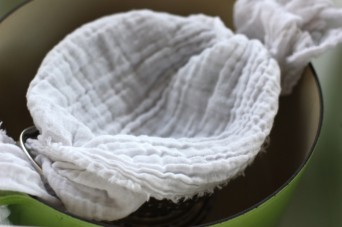

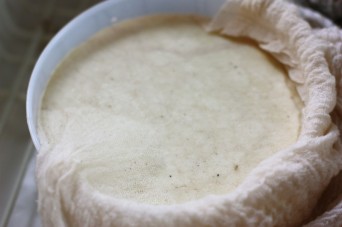
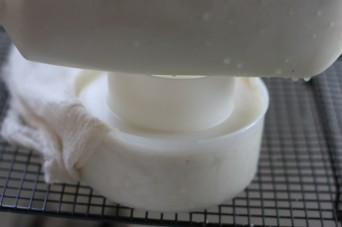
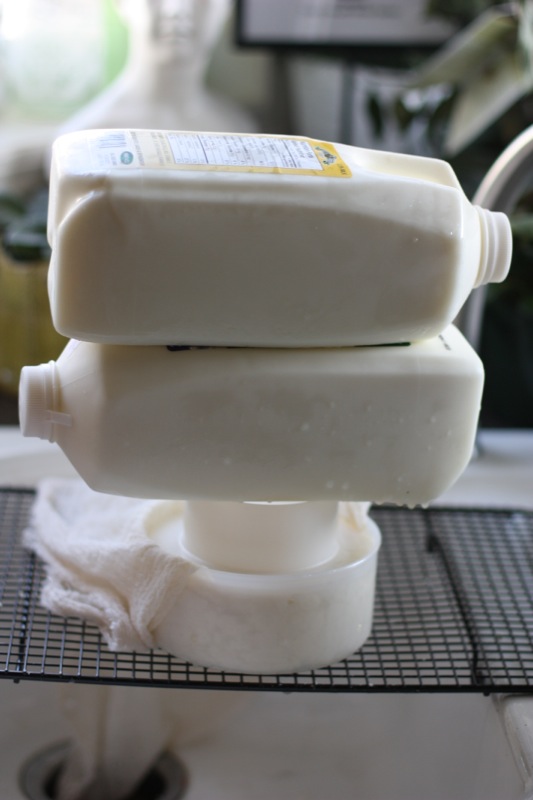
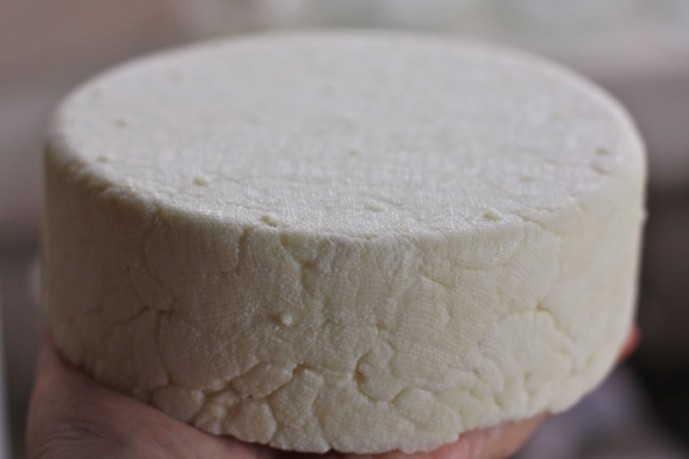
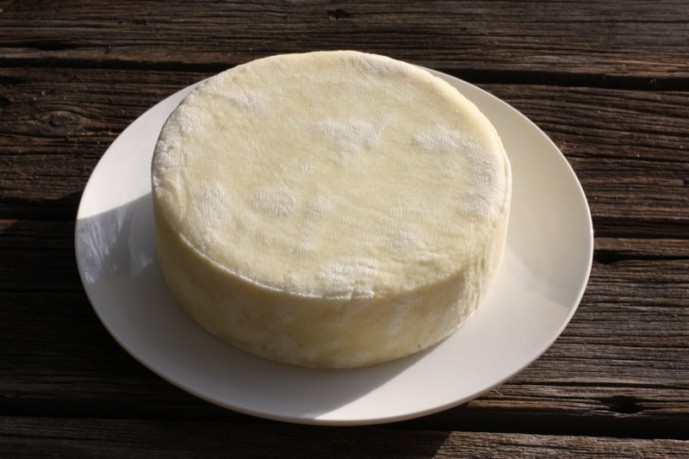
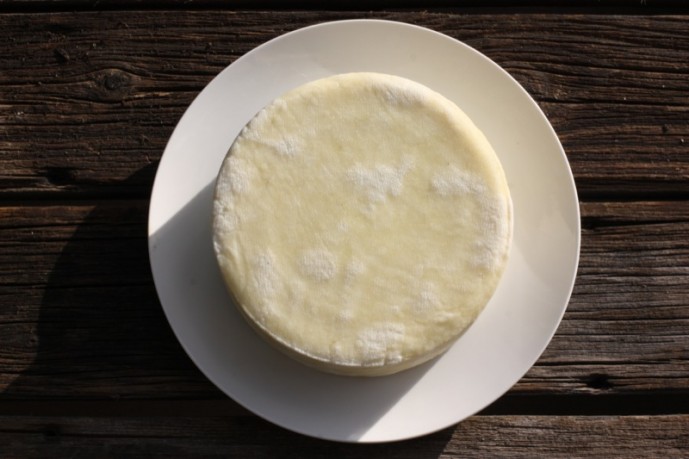
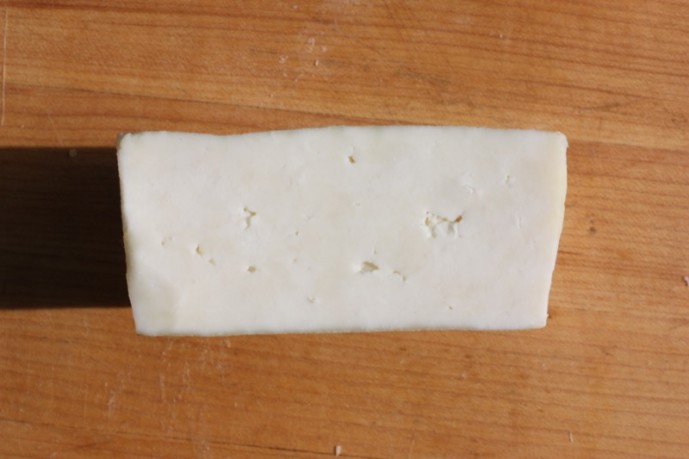
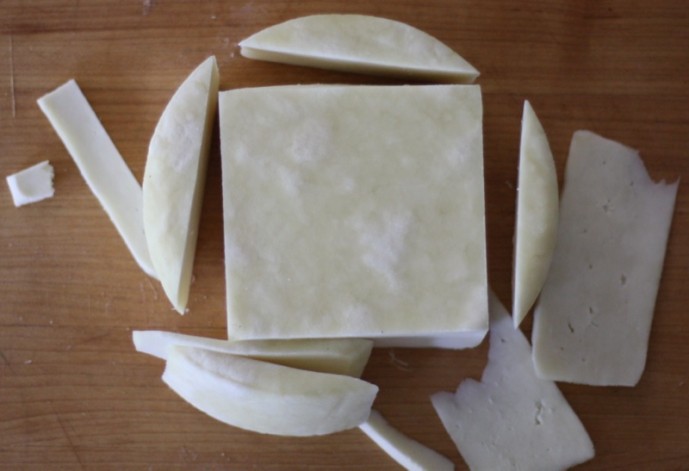
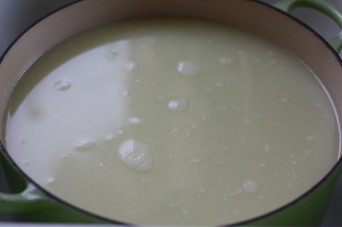
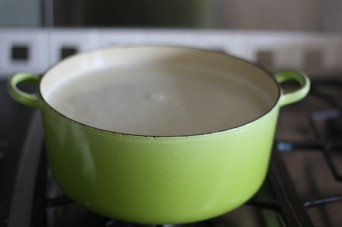
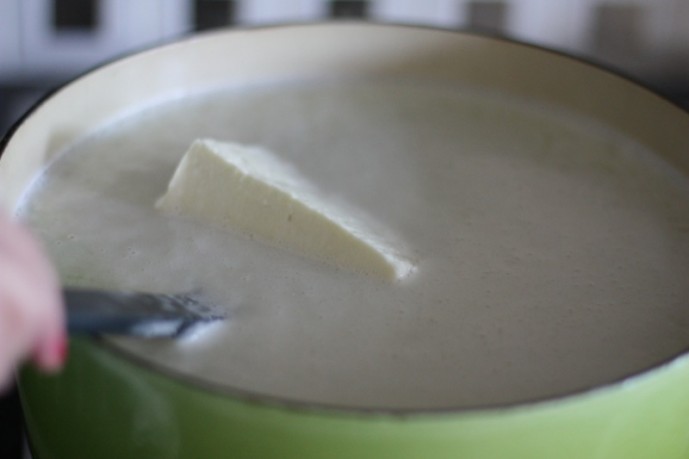
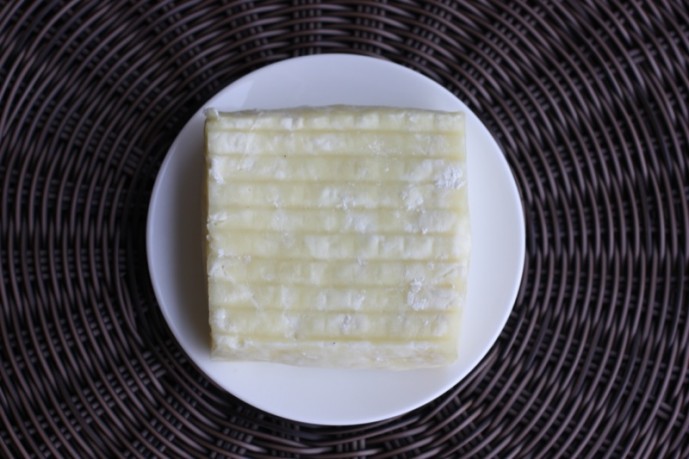
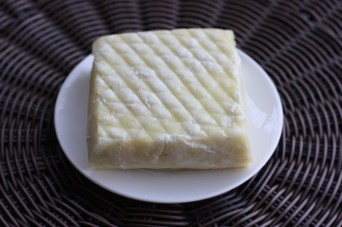
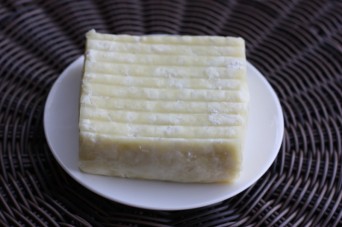
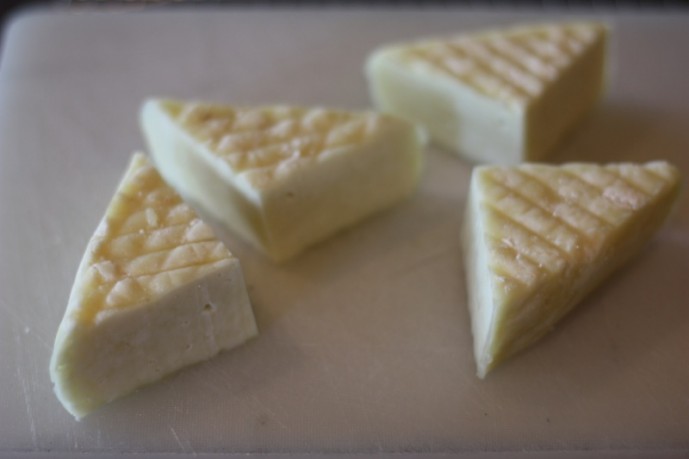
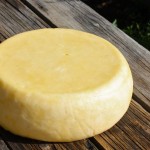
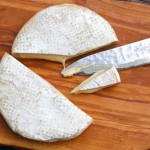
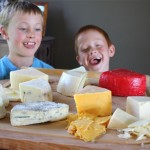
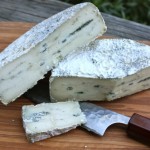
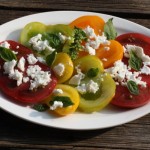
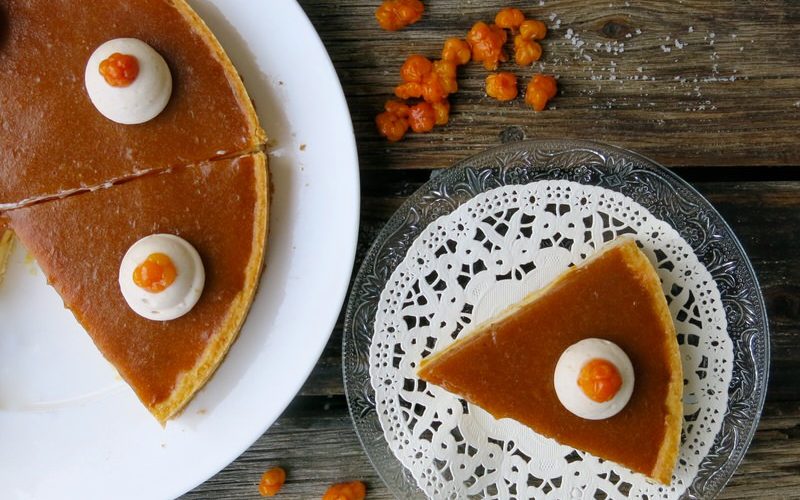



You are so very brave when it comes to cheese!
I seriously can’t wait to make my own halloumi! Thanks so much for all those clear pictures Valerie. It gives me an idea what to look for when making it.. As for the texture; I mostly buy my halloumi from the same brand in the same store but have found considerable differences when baking it. Sometimes it stays very firm and doesn’t melt at all but sometimes I put it in the oil ( I always bake my halloumi in oil, didn’t knowi wasn’t supposed to!) and it melts fairly quickly and then is also quite gooey. However, as soon as you take it out and let it drain on kitchen towel it firms up again and becomes the typical almost rubbery texture that is a bit squeaky when you chew on it.
Simone!
Good to know about the cooking process and texture change of the cheese. I hope the one I made will melt or soften in the middle when heated. The one we made doesn’t at all. It is not “tough”, but it is rubbery and almost dry.
I will update the post when I eat it!
🙂
Valerie
Te first time I ever had halloumi was in a small village in the Epirus area of Greece. I was beside myself when they started carrying it here at some of my favourite places here in Kelowna. Of course I have never attempted to make it myself but hope to someday try it in Cyprus.
I’ve always wanted to make my own cheese but intimidation set in.
Although this would make great Xmas gifts so I am definitely reconsidering it.
Murissa
The Wanderfull Traveler
As always, I’m so impressed by your culinary prowess, Valerie. I’ve made Gouda, mozzarella, ricotta, and soft goat cheese, which are just about the easiest ones you can make. I’m excited to read about the feta, which is one of my favorites!
Isn’t it amazing how one bite of certain foods can transport us back in time and space? 🙂
Valerie I’m speechless. This is freaking amazing.
That looks great, we need to try ths one, but the young one wants some feta snd more chèvre. Is 3 cheeses in one weekend too much?
Larry!
Never!
🙂
Valerie
(Would love to add your posts to the round up. Can you send me your pics?)
I’ve been reading your cheese-making posts and trying to get up the courage to try some myself. It’s been a busy summer but things should slow down in the fall to give me some time. I’ve never had Halloumi but I love your description of it. It does look so professional!
I’ve only ever made my own ricotta. You make this look so easy I’ve got to try it, too. Thanks.
Can I just say – I LOVE YOU!!!
You amaze me Val. That Halloumi makes me want to catch the first flight over to you in Edmonton! But I will make this – your cheese posts are awe worthy and I really need to get off my hiney and follow in your suit.
Promise I will! :))
chow! Devaki @ weavethousandflavors
Halloumi is very interesting! I’m pretty sure I’ve had it although can’t say definitively. I’d love to try it grilled with the caramel flavors that you describe in this post. Your halloumi looks beautiful!
Oh wow, that all looks soooo good. Your photos are excellent too, especially the one with (I assume) your hand in it!
These look amazing! The market ends tomorrow and now I will have more time to do things like this! I love halloumi.
Wow. You’re getting to be quite a cheese expert. Very impressive! I hope you and your dad are doing well.
After doing some research, it is the heating or curing of the cheese in the hot whey that leads to the resistance to melting. Most of the references are vague as to what change happens, but I suspect that it has to do with some change to the proteins and the fat content.
Wow! I am seriously impressed. I am still terrified to try making cheese but to tell you the truth, halloumi is one cheese I have long wanted to cook with but just can’t find. So it makes sense I try this. Maybe in my new, bigger kitchen? I wish I could do it with you in your kitchen. Yours is absolutely perfect!
I can see how the recipe you followed is different from the one I used. On thing I like about the version I made is that I don’t have to use brine. The resulting cheese is not as salty, which I like. I love those glass jars of yours: I need to find some.
Simona
I cannot wait to make your recipe – but, I do have to wait, sadly. It will happen, though. They are wreck jars. Check out your local Crate and Barrel or Williams Sonoma. They are cheaper and C and B.
🙂
V